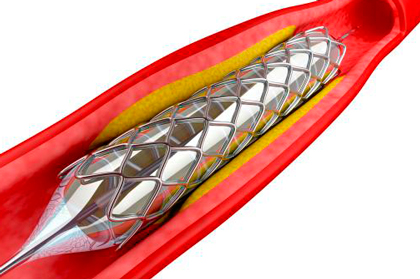The reference vessel diameter is a fundamental factor for restenosis after coronary angioplasty even with drug-eluting stents. The smallest sized stents available are 2.25 mm in diameter, but even smaller vessels can be symptomatic.
This was a prospective multicenter trial of the Resolute Onyx 2.0-mm zotarolimus-eluting stent. The primary endpoint was target lesion failure.
Read also: “Effects of Cerebral Radiation on Interventional Cardiologists”.
Subjects with stable or unstable angina and target lesions ≤27 mm in length, and a reference vessel diameter ≥2.0 mm and <2.25 mm were eligible for enrollment. A subset of subjects underwent follow-up angiography at 13 months post-procedure.
A total of 101 subjects with 104 lesions were enrolled. Almost half of them had a history of diabetes. The rate of target lesion failure at 12 months was 5%, above the pre-specified efficacy goal of 19% (p < 0.001). The rates of target lesion revascularization and acute myocardial infarction were 2.0% and 3.0%, respectively.
Read also: “Excellent Outcomes for the First Sirolimus Eluting Balloon Tested on Instent Restesosis”.
There were no episodes of device thrombosis and the rate of binary restenosis was 12%.
Conclusion
This is the first report of a drug-eluting stent with a dedicated size to treat lesions in vessels with a diameter <2.25 mm. The Resolute Onyx 2.0-mm zotarolimus-eluting stent was associated with a low rate of target lesion failure and late lumen loss, which enable treatment in extremely small vessels.
Editorial
Regular management options for the treatment of symptomatic vessels as small as these include balloon angioplasty or oversizing with a 2.25-mm DES.
The first option is associated with a rate of restenosis of at least 40%, and the second may risk perforation and distal dissection. If the stent is implanted below nominal pressure to prevent such risk, this may lead to malapposition and underexpansion, which might end up associated with thrombosis.
Drug-eluting balloons may also be an option, since they reduce the rates of reintervention when compared with conventional balloons. However, it should be noted that their performance has always been below that of DES.
Original title: First Report of the Resolute Onyx 2.0-mm Zotarolimus-Eluting Stent for the Treatment of Coronary Lesions with Very Small Reference Vessel Diameter.
Reference: Matthew J. Price et al. J Am Coll Cardiol Intv 2017;10:1381–8.
Get the latest scientific articles on interventional cardiologySubscribe to our weekly newsletter
We are interested in your opinion. Please, leave your comments, thoughts, questions, etc., below. They will be most welcome.






